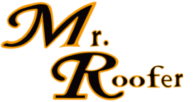30September 2020
One of the most essential preventative maintenance jobs you can have done on your house is a roof inspection. This job should be written on your calendar as it can be easily overlooked if you haven’t experienced any problems throughout the year. Your roof is your first line of defense against extreme weather and storms. Heavy snowfalls or high winds can tear through town at any time and cause severe damage to your roof.
When you put blind faith into your roof and not have it inspected annually, you put it at risk for leaks, damaged insulation, and even structural issues. Issues can even become much more extensive, so contact a professional, such as Mr. Roofer, to schedule your annual roof inspection. These are some things you should know about having your roof inspected.
Professional Inspections VS Homeowner Roof Inspection
As a homeowner, you can notice apparent problems with your roof, such as missing or loose shingles, without having to crawl up on the roof. However, other issues can occur, which are not as noticeable to the untrained eye, so you should have a professional perform your roof inspection. As your roof ages, it becomes even more important for a professional roofing company to inspect your roof to look for underlying issues that can become significant problems.
What You Should Expect From a Professional Roof Inspection
During your roof inspection, the inspector should look for organic growth issues, unusual wear and tear, damage caused by windblown debris, or any problems that may have happened during the initial installation of your roof. There are four facets involved in your roof inspection:
- Materials
- Structure
- Interiors
- Workmanship
The structure inspection involves checking for signs of sagging or uneven roof planes. The roof inspections should also include looking at the condition of your gutter system, fascia, and soffits. If your home has a chimney, the inspector should inspect it for cracks, the state of the chimney caps, or crumbling grout. They should also look at the vents in your attic as improper venting allows moisture and heat to buildup, which will reduce your roof’s life.
Materials inspection involves looking for curling shingles, or missing and loose ones. The inspector should also look for rust, moss, stains, missing fasteners, or flashing. If it is noticed you have aggregate settling into your roof valleys or on the ground, it could be a sign you may need a new roof soon. During the materials inspection, they should also look at the seals around your vent pipes to see if there are any signs of deterioration or gaps.
An interior inspection is done to check for roof leaks, which can result in significant damage inside your home. Part of this inspection involves looking at the ceilings inside your home to see if there are any water stains, rot, or mold.
The workmanship portion of the roof inspection is done to see if the original installation has left your roof vulnerable for leaks or other types of damage in the future. If, for example, your flashing was not correctly placed around your roof’s penetration, this is a red flag for a poor installation.
Once the roof inspection is complete, you should receive a detailed report concerning the condition of your roof. If there are any required repairs, you should schedule them immediately.
Mr. Roofer provides top-quality workmanship in an affordable and timely manner. Whether you need an entirely new roof, repairs on your existing roof, or need to schedule a roof inspection, we are here for you. Our expert technicians stand behind all our work.
